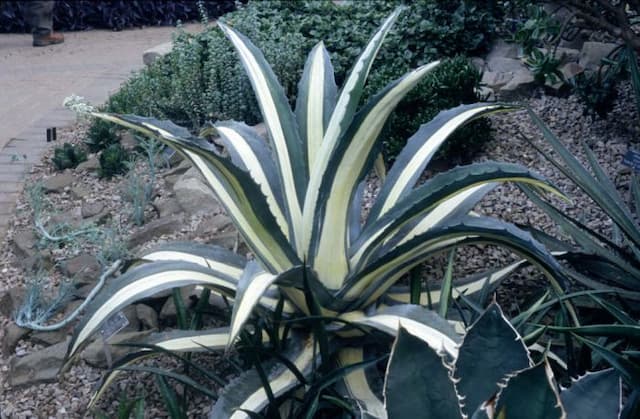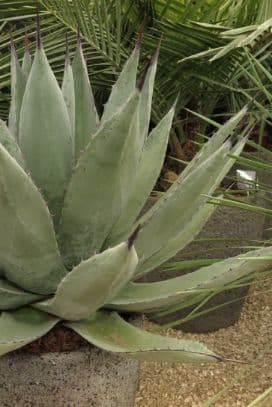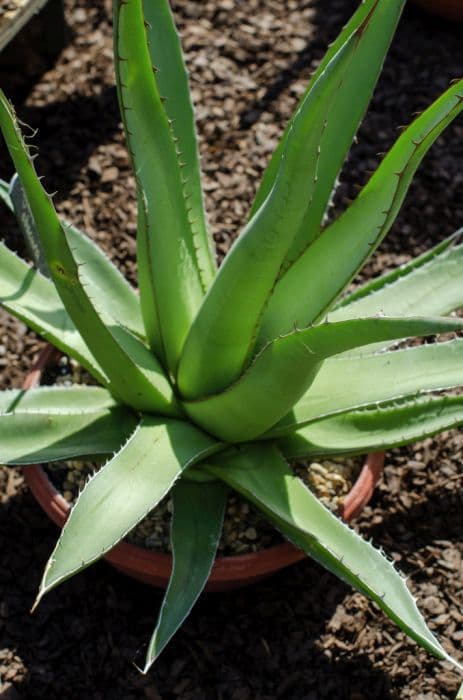False Lily of the Valley Maianthemum bifolium

ABOUT
The plant known as false lily of the valley is small and could be described as delicate. Its leaves are usually in pairs, hence its name, with each leaf being broad, ovate, and having a heart-shaped base. The texture of the leaves is smooth with a rich green color that can sometimes appear slightly glossy. During the blooming season, false lily of the valley produces very small, white flowers that form a dense cluster on a slender stalk, rising above the foliage. These flowers are star-shaped, often with four to six petals, and they exude a subtle fragrance that can be quite appealing. After the flowering period, the plant might produce berries. These are typically red or orange, and round, providing a visual contrast to the green of the leaves. The overall look of false lily of the valley is one of understated charm, often forming carpets on the forest floor where it grows in the wild. Its appearance, combining the leaf pairs and the delicate flowers, has contributed to its common name, as it bears a superficial resemblance to the true lily of the valley, although they are not closely related.
About this plant
 Names
NamesFamily
Asparagaceae
Synonyms
False Lily of the Valley, May Lily, Two-leaf False Solomon's Seal, Two-leaved Solomon Seal, May Bells
Common names
Convallaria bifolia, Smilacina bifolia, Unifolium bifolium, Maianthemum canadense var. interius, Unifolium canadense var. interius.
 Toxicity
ToxicityTo humans
False Lily of the Valley (Maianthemum bifolium) is not commonly regarded as a toxic plant to humans. Ingestion of this plant typically does not cause severe poisoning. However, as with many wild plants, it is not recommended to consume parts of this plant as they are not intended for human consumption and there may be individual cases of sensitivity or allergic reaction.
To pets
False Lily of the Valley (Maianthemum bifolium) is similarly not known to be toxic to pets. There are no widely recognized symptoms of poisoning in domestic animals from ingestion of this plant. However, caution is advised as individual animals may have different sensitivities, and not all possible toxic effects are well-documented. It is always best to prevent pets from ingesting plants that are not confirmed to be safe.
 Characteristics
CharacteristicsLife cycle
Perennials
Foliage type
Deciduous
Color of leaves
Green
Flower color
White
Height
0.5-1 feet (15-30 cm)
Spread
0.5-1 feet (15-30 cm)
Plant type
Herb
Hardiness zones
3
Native area
Eurasia
Benefits
 General Benefits
General Benefits- Ecological importance: Maianthemum bifolium, commonly known as false lily of the valley, serves as food for various insects and animals in the ecosystem.
- Habitat diversity: By thriving in shaded woodland areas, it contributes to undergrowth biodiversity and habitat complexity.
- Soil improvement: The plant helps in soil stabilization and prevents erosion with its rhizomatous growth habit.
- Aesthetic value: With its delicate white flowers and lush green foliage, false lily of the valley adds beauty to forest floors and shade gardens.
- Indicator species: It can act as an indicator of soil and forest health due to its preference for specific growth conditions.
 Medical Properties
Medical Properties- Maianthemum bifolium, commonly known as False Lily of the Valley, has been traditionally used in some cultures for its purported medicinal properties.
- It has been used in folk medicine as a diuretic, potentially helping to promote the production of urine.
- The plant has also been used for its anti-inflammatory properties, though detailed scientific studies supporting this use are limited.
- In some herbal traditions, preparations made from this plant were used as a mild sedative.
- There is historical use of False Lily of the Valley to relieve headaches, though efficacy and safety have not been well-established by modern research.
 Air-purifying Qualities
Air-purifying QualitiesThis plant is not specifically known for air purifying qualities.
 Other Uses
Other Uses- Traditional Dye: The roots of Maianthemum bifolium, also known as False Lily of the Valley, can be used to produce a reddish-brown or orange dye for coloring textiles.
- Garden Aesthetic: False Lily of the Valley is used for its ornamental value in shade gardens due to its delicate appearance and ground-covering abilities.
- Insect Repellent: Certain indigenous communities have used the crushed leaves of False Lily of the Valley to repel insects.
- Indicator Species: The plant can serve as an indicator of soil and forest health, often thriving in well-drained, rich soils.
- Education and Research: Maianthemum bifolium is sometimes used in botanical studies to understand the ecology of forest understorey plants.
- Floral Arrangements: Its subtle and small flowers can be included in wildflower arrangements for their understated beauty.
- Photography: Due to its attractiveness in woodland settings, False Lily of the Valley is often the subject of nature photography.
- Environmental Monitoring: The presence and health of Maianthemum bifolium populations can help in monitoring the impact of climate change on forest ecosystems.
- Cultural Symbolism: In some regions, False Lily of the Valley may be used in cultural practices or as a symbol of local heritage and natural beauty.
- Leaf Litter Contribution: As a deciduous plant, it contributes to leaf litter, which can enhance soil quality over time.
Interesting Facts
 Feng Shui
Feng ShuiThe plant Maianthemum bifolium, commonly known as False Lily of the Valley, is not used in Feng Shui practice.
 Zodiac Sign Compitability
Zodiac Sign CompitabilityThe plant False Lily of the Valley is not used in astrology practice.
 Plant Symbolism
Plant Symbolism- Purity: The Maianthemum bifolium, commonly known as "false lily of the valley," has white flowers which are often associated with purity and innocence in floral symbolism.
- Hope: As a spring blooming plant, the false lily of the valley symbolizes hope and the promise of new beginnings which the spring season often represents.
- Humility: The small stature and delicate appearance of the plant can be seen to represent humility in its unassuming presence in the forest undergrowth.
 Water
WaterFor the False Lily of the Valley, it's crucial to maintain consistently moist soil without letting it become waterlogged. Water the plant once a week with approximately 1-2 gallons, depending on the size of the plant and the environmental conditions. During the growing season in spring and summer, you may need to water more frequently, especially if the weather is particularly dry or hot. Reduce watering in the fall and further in winter when the plant's growth slows down. Always check the top inch of soil for moisture and water accordingly to prevent overwatering.
 Light
LightThe False Lily of the Valley thrives in partial to full shade. It is ideally suited to a spot where it can receive dappled sunlight or indirect light. Avoid placing it in full sun, as this can scorch its leaves and stress the plant. A north-facing spot or under the canopy of larger trees or shrubs can provide the ideal light conditions for this understory plant.
 Temperature
TemperatureThe False Lily of the Valley is hardy and can tolerate a temperature range between 20°F to 75°F. It prefers cool to moderate temperatures and grows well in USDA hardiness zones 3 to 8. The ideal temperature for this plant is between 60°F and 70°F. Extreme temperatures above or below this range can be harmful to the plant.
 Pruning
PruningThe False Lily of the Valley generally requires little pruning. Pruning can be done to remove dead or yellowing leaves to maintain the plant's appearance and encourage healthy growth. It's best to prune in the early spring before new growth begins. Cut back any unwanted or irregular growth to maintain a compact and lush plant. Pruning is not typically necessary more than once a year.
 Cleaning
CleaningAs needed
 Soil
SoilFalse Lily of the Valley (Maianthemum bifolium) prefers a rich, well-drained soil mix with plenty of organic matter, such as a blend of loamy soil, peat, and leaf mold. The ideal soil pH for False Lily of the Valley is slightly acidic to neutral, ranging from 5.5 to 7.0.
 Repotting
RepottingFalse Lily of the Valley (Maianthemum bifolium) rarely needs repotting as it prefers to be undisturbed; repotting is typically only necessary if it becomes root-bound or the soil has degraded, which might be every 3 to 4 years.
 Humidity & Misting
Humidity & MistingFalse Lily of the Valley (Maianthemum bifolium) thrives in moderate to high humidity levels, ideally between 60% to 80%, which replicate the moist woodland conditions the plant is accustomed to in the wild.
 Suitable locations
Suitable locationsIndoor
Keep in indirect light, water when topsoil feels dry.
Outdoor
Plant in shaded area with rich, moist soil.
Hardiness zone
3-7 USDA
 Life cycle
Life cycleThe life cycle of Maianthemum bifolium, commonly known as False Lily of the Valley or May Lily, begins with seed germination, which typically occurs in spring under damp, shaded conditions. After sprouting, the plant develops a rhizome system from which a single shoot emerges along with two leaves which are characteristic of the species. The plant matures over several years, during which it grows slowly, establishing a more extensive rhizome network. Once mature, the May Lily produces small, white, fragrant flowers clustered on a raceme, usually in late spring or early summer. Following pollination, typically by insects, the flowers develop into small, red berries which contain seeds. These seeds are then dispersed by animals or gravity, leading to the establishment of new plants, thus continuing the cycle.
 Propogation
PropogationPropogation time
Spring to early summer
False lily of the valley (Maianthemum bifolium) is commonly propagated by division, which is most effectively carried out in the spring as the plant emerges from dormancy. To propagate via division, the clumps of the plant are gently dug up and divided into smaller sections, ensuring that each section contains at least one growth point. These divisions are then replanted into prepared soil, spaced about 6 to 12 inches (15 to 30 centimeters) apart, at the same depth they were growing previously. Keeping the soil consistently moist after planting will help establish the new divisions. Division is favored for false lily of the valley because it maintains the characteristics of the parent plant and allows for relatively quick establishment of new plants.









